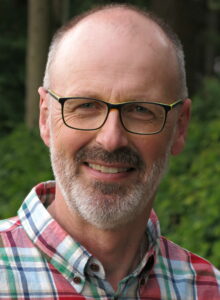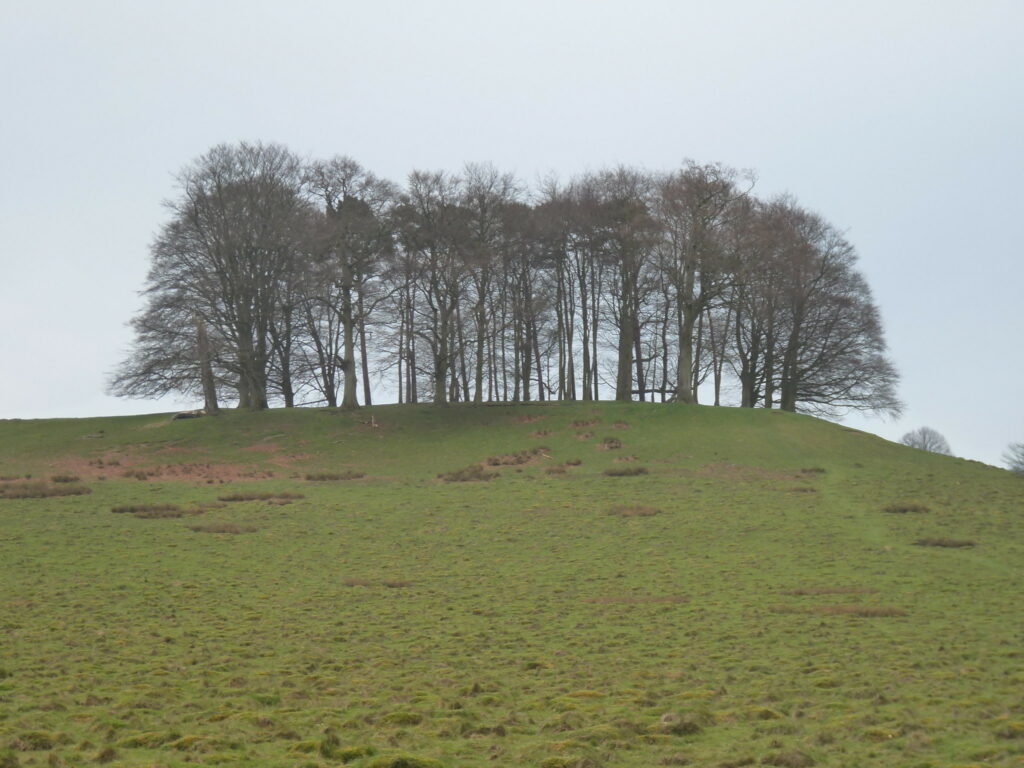 The Power of Trees: How Ancient Forests Can Save Us if We Let Them is forester Peter Wohlleben’s follow-up to his New York Times bestseller, The Hidden Life of Trees. Throughout this eye-opening book, Wohlleben describes how trees pass knowledge and their ability to survive climate change down to future generations. He is also unsparing in his criticism of those in positions of economic and political power who plant trees solely for logging and virtue-signaling, while continuing to ruthlessly exploit nature.
The Power of Trees: How Ancient Forests Can Save Us if We Let Them is forester Peter Wohlleben’s follow-up to his New York Times bestseller, The Hidden Life of Trees. Throughout this eye-opening book, Wohlleben describes how trees pass knowledge and their ability to survive climate change down to future generations. He is also unsparing in his criticism of those in positions of economic and political power who plant trees solely for logging and virtue-signaling, while continuing to ruthlessly exploit nature.

The Power of Trees is an impassioned plea for the preservation of nature’s incomparable biodiversity, not just for the sake of the trees, but also for all of us. Author Peter Wohlleben kindly agreed to answer our questions, discussing topics such as what inspired him to write this latest follow-up, the most effective ways to battle misinformation and his current and future projects. His new book was published by Greystone Books in April and is available at nhbs.com.
After your highly successful book, The Hidden Life of Trees, what inspired you to write this follow-up?
Research into trees and forests is progressing rapidly. Almost every week, something new and surprising is discovered. Also, I am seeing for myself the way trees in the forest are reacting to climate change. And not all the news is bad. Trees react and learn, they adapt, which gives us hope that they will be around for a long time.
Nach der Veröffentlichung Ihres erfolgreichen Buches, ‘The Hidden Life of Trees’, was hat Sie dazu inspiriert einen zweiten Teil herauszubringen?
Die Forschung zu Wald und Bäumen schreitet rasend schnell voran. Fast wöchentlich gibt es überraschende neue Erkenntnisse, zudem beobachte ich selbst in den Wäldern die Reaktion der Bäume auf den Klimawandel. Und es gibt nicht nur schlechte Meldungen: Bäume reagieren und lernen, passen sich an und machen so Hoffnung, dass es sie auch noch lange geben wird.
In Chapter 1 ‘When Trees Make Mistakes’, you make a very interesting point about how trees growing in a community can support one another through stressful periods, while ones growing away from woodland are ‘on their own’. Given the increasing fragmentation of our woodland habitats, do you think this lack of a network between trees will exacerbate the impacts of climate change?
That’s right. We urgently need larger forests. In Germany, for example, the forest is divided into about 2 million fragments. This reduces the trees’ ability to cool the landscape and create rain clouds. This is why when we rewild landscapes, as the nations of the world agreed to do in Montreal, we should pay attention to creating large contiguous natural areas.
Im ersten Kapitel, ‘When Trees Make Mistakes’, machen Sie eine sehr interessante Beobachtung, dass Bäume, die in Gemeinschaft wachsen, sich gegeseitig in stressigen Zeiten unterstützen können, während jene die nicht in Gemeinschaft leben, ‘alleine’ sind. Wenn man bedenkt, dass der Lebensraum Wald immer mehr zersplittert wird, glauben Sie, dass die Abwehsenheit einer solchen Gemeinschaft einen Einfluss auf die Auswirkungen des Klimawandels haben kann?
Richtig – wir brauchen dringend größere Wälder. In Deutschland etwa ist der Wald in rund 2 Millionen Fragmente zergliedert. Die Fähigkeit, die Landschaft zu kühlen oder Regenwolken zu erzeugen, leidet darunter. Deshalb sollten wir bei der Renaturierung der Landschaft, wie sie in Montreal von den Nationen der Welt beschlossen wurde, darauf achten, große zusammenhängende Naturgebiete zu schaffen.

Wood and wood-derived products are so integrated into our ways of life, from building materials to toilet paper, and it is often seen as the more environmentally friendly, ‘sustainable’ option compared to material such as concrete. Do you think it’s possible for us to move towards less destructive forestry practices and still be able to use this material at such a large scale, or will usage need to be adapted as well?
To harvest wood, we need forests, that’s pretty obvious. At the moment, however, the question we always focus on is how we can satisfy our demand for wood, without giving much thought to how the forest itself is going to survive. We need to move the survival of the forest front and center in our discussions. Only then will we be able to answer questions about how much timber can be harvested without damaging the ecosystem too much. Trees, after all, produce biomass to meet their own needs and not the needs of sawmills.
Wälder und deren Produkte sind so sehr in unsere Lebensweise integriert, von Baustoffen bis hin zum Toilettenpapier, welche oftmals als umweltfreundlichere und nachhaltigere Optionen im Gegenzug zu Materialen wie Beton gelten. Ist es Ihrer Meinung nach möglich, dass wir uns weniger zerstörerische Praktiken in der Forstwirtschaft aneignen können und dennoch Materialien in dem gleichen Ausmaß verwenden können wie bisher, oder muss dies auch angepasst werden?
Um Holz zu ernten, brauchen wir Wald – eine Binsenweisheit. Doc aktuell stellen wir immer zuerst die Frage, wie unser Bedarf nach Holz befriedigt werden kann und weniger, wie der Wald überlebt. Deshalb muss das Überleben des Waldes ins Zentrum unser Bemühungen gestellt werden. Erst anschließend können wir die Frage beantworten, wie viel Holz geerntet werden kann, ohne das Ökosystem zu sehr zu beschädigen. Denn die Bäume produzieren die Biomasse ja für ihre Zwecke, nicht für das Sägewerk.

COP26 in 2021 produced a pledge signed by over 100 nations to halt and reverse deforestation by 2030, though it only refers to net deforestation, with forest loss being replaced ‘sustainably’. Why do you think the value of ancient woodlands is so often overlooked when policies surrounding climate change are made?
Honestly, I don’t know. Way back around 1800, the world-renowned naturalist Alexander von Humboldt described the importance of forests for cooling landscapes and creating local rainfall. Modern satellite research confirms that old-growth forests are especially good at doing this. And yet, these days, forests are viewed mainly in terms of carbon storage. That’s far too narrow a view.
Bei COP26 in 2021 unterzeichneten über 100 Nationen das Versprechen die Entwaldung bis 2030 einzustellen bzw, rückgängig zu machen, jedoch geht es lediglich um die Netto-Entwaldung und den nachhaltigen Ersatz von bereits abgeholzten Wäldern. Warum werden alteingesessene Waldlandschaften Ihrer Meinung nach oft außer acht gelassen, wenn es darum geht Richtlinien zu erstellen?
Ich weiß es ehrlich gesagt nicht. Schon Alexander von Humboldt, der weltweit berühmte Naturwissenschaftler, hat um 1800 die Wichtigkeit der Wälder für die Kühlung der Landschaft und die lokalen Regenfälle beschrieben. Moderne Satellitenforschung bestätigt, dass gerade alte Wälder dies besonders gut können. Doch aktuell wird Wald überwiegend unter dem Gesichtspunkt der Kohlenstoffspeicherung betrachtet. Das ist viel zu kurz gesprungen.

Part 3: ‘Forests of the Future’ mentions that climate change is often blamed for the impacts of mismanaged forests. What do you believe are the most effective ways to combat this misinformation?
The only thing you can do is to push back. And that is exactly what motivates me in my work. I educate the public about what is really going on so they can decide for themselves what needs to be done. That is why I write books and travel to give presentations, and why I have established a new course (social and ecological forest management) at Eberswalde University for Sustainable Development. My goal is to create an emotional connection between people and trees. Trees make people happy!
Teil 3: In ‘Forests of the Future’ sprechen Sie davon, dass der Klimawandel oft für die Auswirkungen von schlecht geführten Wäldern verantwortlich gemacht wird. Was sind Ihrer Meinung nach die effektivsten Methoden um die Verbreitung solcher falschen Informationen zu vermeiden?
Da kann man nur gegenhalten. Das ist genau der Grund für meine Motivation: Die Bevölkerung über die wahren Hintergründe zu informieren, damit sie selber entscheiden können, was zu tun ist. Deshalb schreibe ich Bücher, deshalb reise ich zu Vorträgen, deshalb habe ich einen neue Studiengang an der Hochschule Eberswalde initiiert (sozial-ökologisches Waldmanagement). Mein Ziel: Menschen und Bäume emotional zu verbinden. Bäume machen glücklich!
One of the main solutions that a number of people are beginning to promote is the stepped back approach of allowing nature to regenerate without serious hands-on management. In a world where people often want to see governments taking action to help nature, do you think this method would be accepted by the public?
There’s no quick fix. People want to help. They want to actively participate in making everything better. But our activities lie at the heart of the problem. It’s difficult for us to step back and simply observe. Nature has been healing itself for hundreds of millions of years and it does this better without any help from us. The solution is to elevate the art of observation. If you visit the same places for years and take photographs, you see how the landscape recovers and changes for the better. This gives people hope and makes them happy! It’s the best cure for “climate depression”.
Eine der Hauptlösungen, die mehr und mehr Aufmerksamkeit bekommt, ist es, der Natur die Möglichkeit zu geben sich selbst zu regenerieren ohne größere Eingriffe. Kann Ihrer Meinung nach in einer Welt, wo Menschen von der Regierung Hilfe für die Natur erwarten, solch eine Methode öffentlich akzeptiert werden?
Das ist ein langer Weg. Menschen wollen helfen, wollen aktiv umgestalten, um alles besser zu machen. Doch unsere Aktivitäten sind ja Kern des Problems. Sich zurücklehnen und zuzuschauen, wie die Natur es seit Hunderten von Millionen Jahren immer noch besser macht, ist schwierig. Der Ausweg: Wir sollten das Beobachten thematisieren. Wer immer wieder dieselben Orte über Jahre hinweg aufsucht und auch Fotos macht, sieht, wie sich die Landschaft erholt und positiv verändert. Das macht Hoffnung und macht glücklich! Es ist das beste Mittel gegen die “Klimadepression”.
Do you have any current projects or plans for the future that you could tell us about?
I’m still writing books of course and I work nationally and internationally with our non-profit organization to prevent illegal clear-cutting and bring back old-growth forests. I also work at our forest academy almost every day (www.wohllebens-waldakademie.de) to tell people more about the wonder of trees. Forests are endlessly fascinating and you never run out of things to discover–I am still learning something new every day.
Haben Sie zukünftig Projekte oder Pläne, die Sie hier gerne besprechen möchten?
Ich schreibe natürlich weiter Bücher, kümmere mich national und international mit unserer gemeinnützigen Organisation um die Verhinderung illegaler Kahlschläge und die Rückkehr der Urwälder. Daneben arbeite ich fast täglich in der Waldakademie (www.wohllebens-waldakademie.de), um Menschen das Wunder der Bäume näher zu bringen. Wald ist so faszinierend, dass es unendlich viel zu entdecken gibt – ich lerne also jeden Tag immer noch dazu.
Answers translated from German by Jane Billinghurst.
 The Power of Trees: How Ancient Forests Can Save Us if We Let Them was published by Greystone Books in April 2023 and is available from nhbs.com
The Power of Trees: How Ancient Forests Can Save Us if We Let Them was published by Greystone Books in April 2023 and is available from nhbs.com

